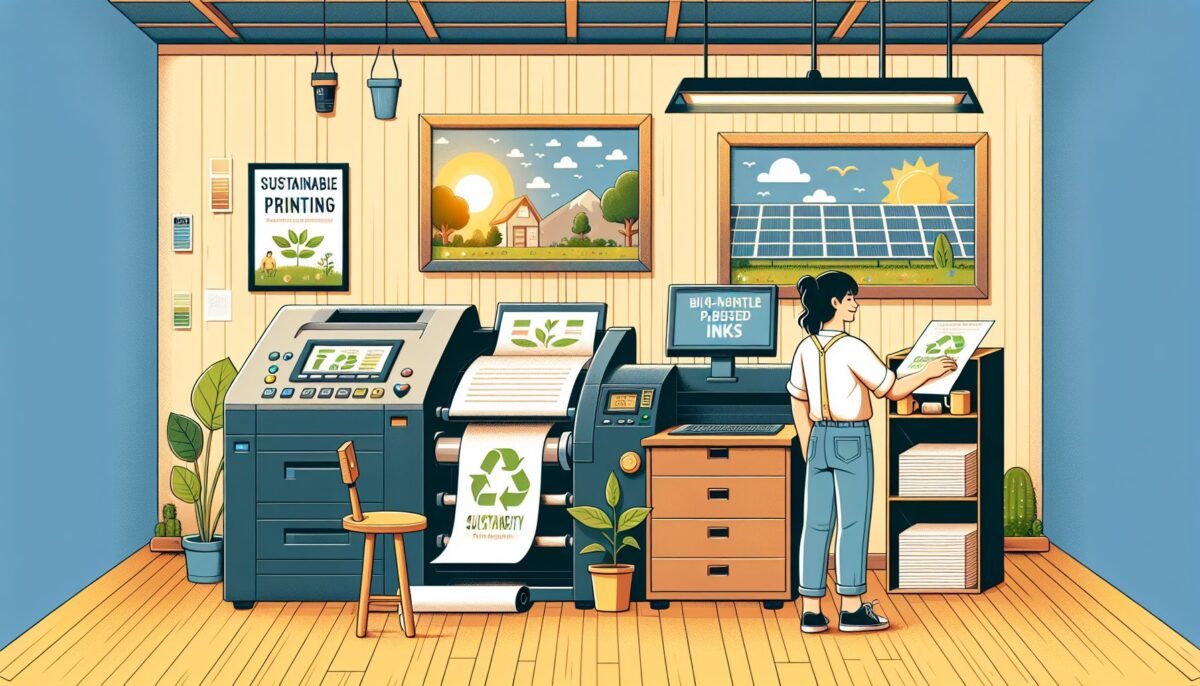In today’s world, where environmental concerns are at the forefront of our minds, it is essential for businesses to prioritize sustainability in all aspects of their operations. Printing is no exception, as the industry can have a significant impact on the environment due to the use of paper, ink, and energy. By implementing sustainable practices in printing, businesses can reduce their carbon footprint, lower costs, and appeal to environmentally conscious consumers.
The Problem with Traditional Printing Methods
Traditional printing methods often involve the use of large amounts of paper, which can contribute to deforestation. In addition, the production of ink and toner cartridges can release harmful chemicals into the environment. Furthermore, the energy consumption required to power printing equipment can contribute to greenhouse gas emissions.
The Benefits of Sustainable Printing
Sustainable printing practices offer a range of benefits for both businesses and the environment. By using recycled paper and eco-friendly ink, companies can reduce their impact on natural resources and minimize waste. Additionally, by optimizing printing processes and using energy-efficient equipment, businesses can lower their operating costs and carbon emissions.
Tips for Sustainable Printing
There are several strategies that businesses can use to promote sustainability in printing.
-
Use recycled paper: By using paper made from recycled materials, businesses can reduce the demand for virgin paper and minimize the impact on forests.
-
Choose eco-friendly ink: Many traditional inks contain harmful chemicals that can be damaging to the environment. Opting for eco-friendly ink made from soy or vegetable-based materials can help reduce pollution.
-
Print double-sided: Encourage employees to print double-sided whenever possible to reduce paper waste.
-
Implement a paperless policy: Consider moving towards a paperless office by digitizing documents and encouraging electronic communication.
-
Use energy-efficient equipment: Invest in energy-efficient printers and copiers to reduce energy consumption and lower operating costs.
Case Studies: Examples of Sustainable Printing Practices
Several companies have successfully implemented sustainable printing practices, setting a positive example for others to follow. One such company is Patagonia, a well-known outdoor apparel brand. Patagonia uses 100% post-consumer waste paper for their catalogs and has implemented a carbon offset program to reduce their environmental impact. Another example is HP, which has developed a closed-loop recycling program for ink cartridges, reducing the need for new materials and minimizing waste.
The Future of Sustainable Printing
As the push for sustainability continues to grow, the printing industry will need to adapt to meet the changing demands of consumers and regulators. Businesses that prioritize sustainable printing practices will not only reduce their environmental impact but also gain a competitive edge in the marketplace. By making a commitment to sustainability, companies can help protect the planet for future generations while also reaping the benefits of lower costs and increased customer loyalty.
In conclusion, sustainability in printing is essential for businesses looking to minimize their environmental impact and appeal to socially conscious consumers. By implementing sustainable practices such as using recycled paper and energy-efficient equipment, companies can reduce their carbon footprint and contribute to a greener future. Businesses that prioritize sustainability in printing will not only benefit the environment but also their bottom line. It is time for companies to take action and make sustainability a top priority in their printing operations.

